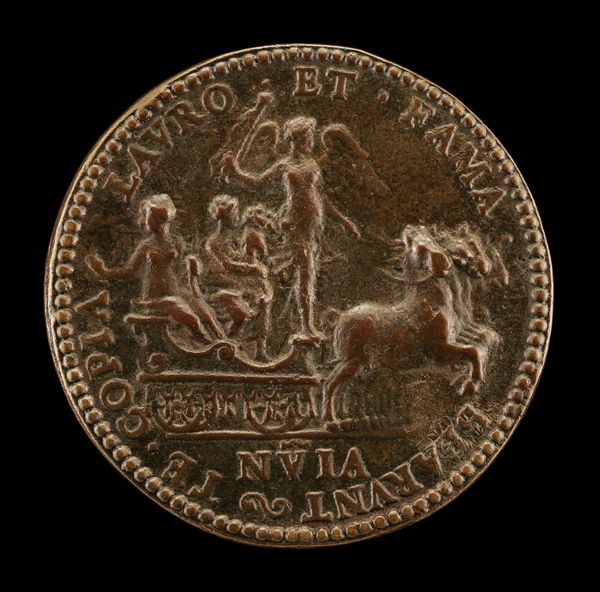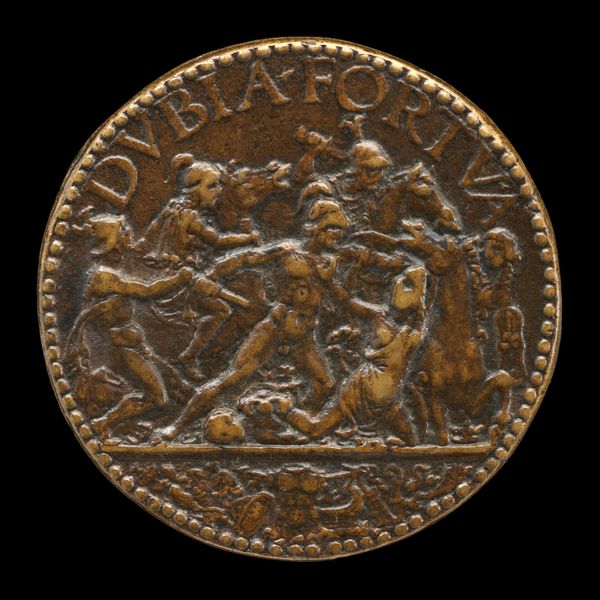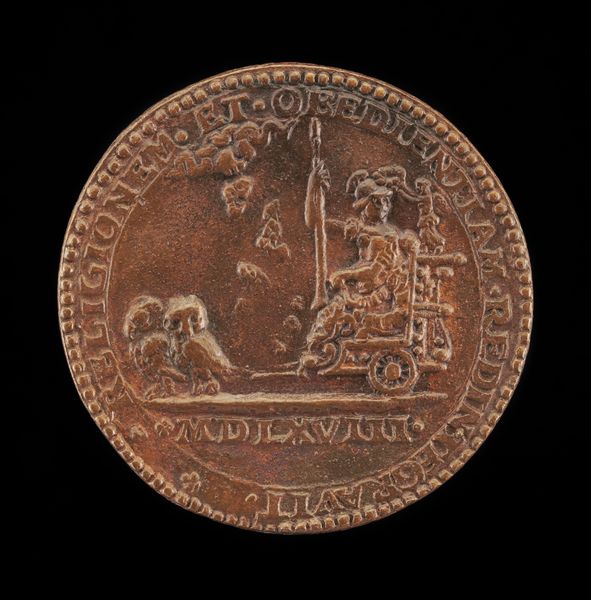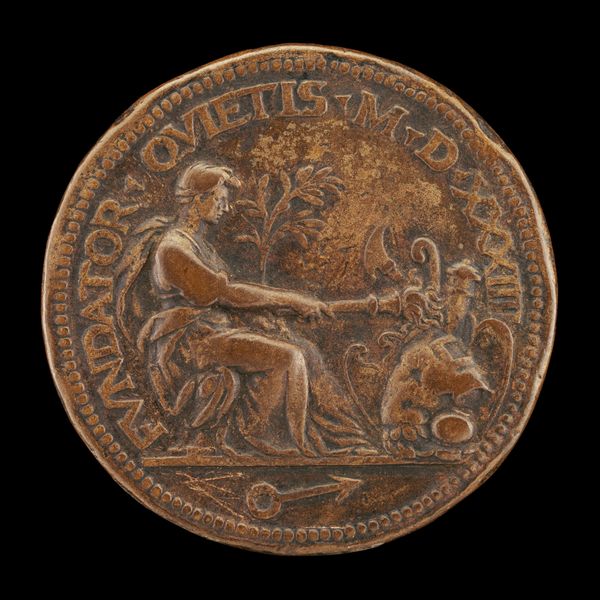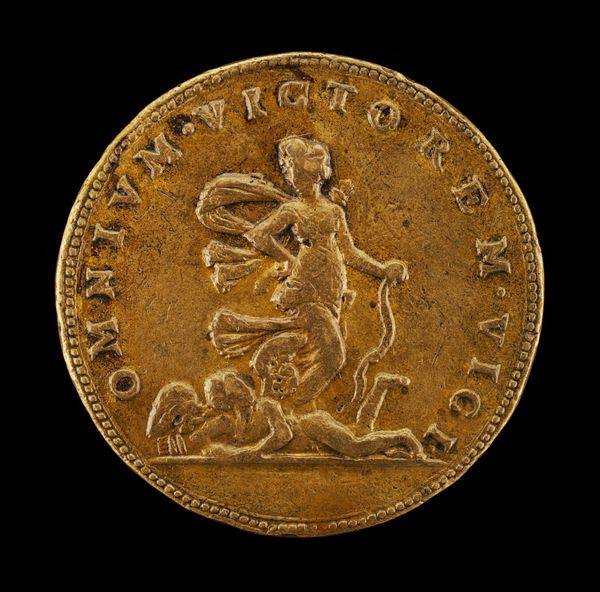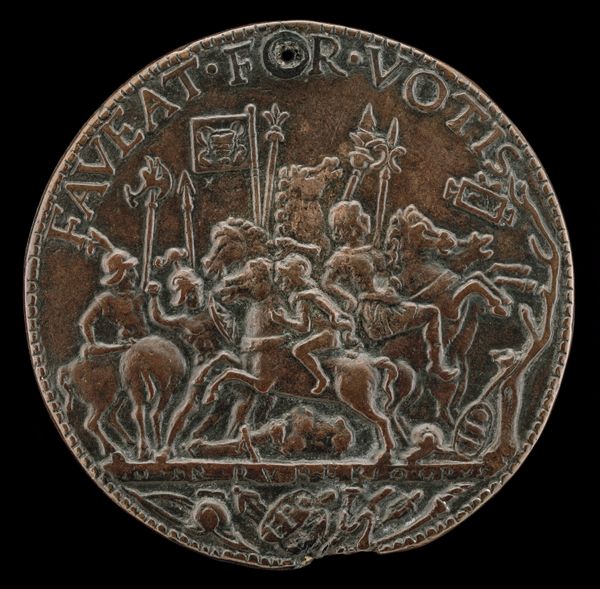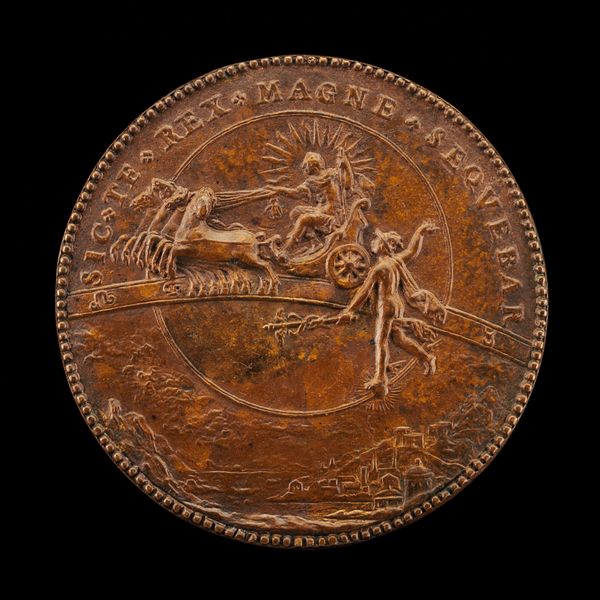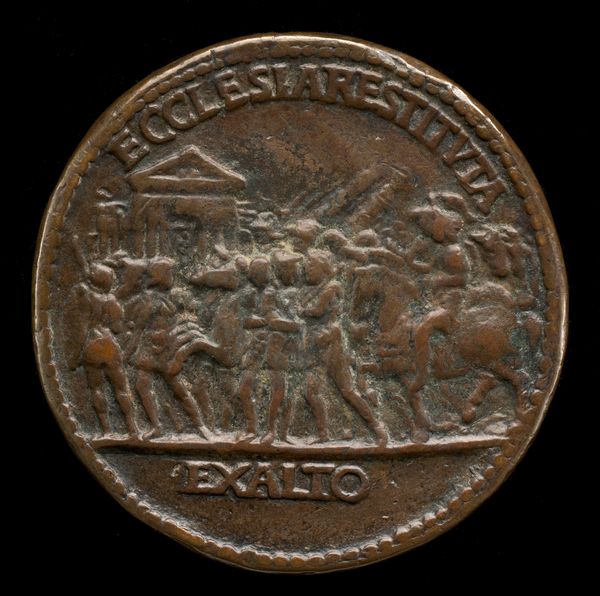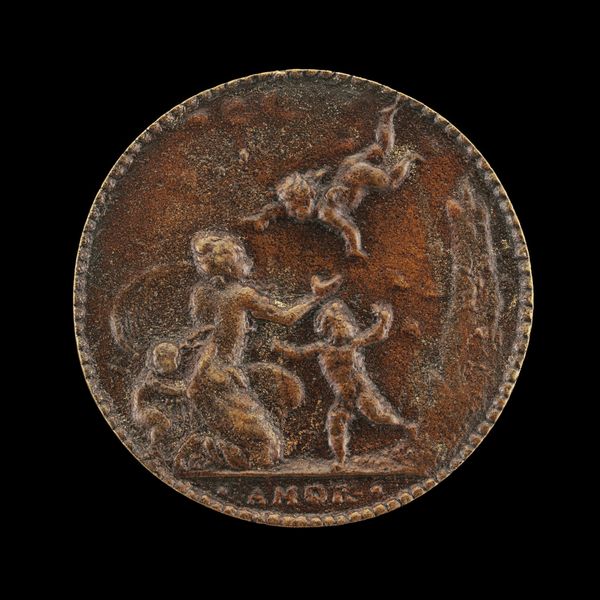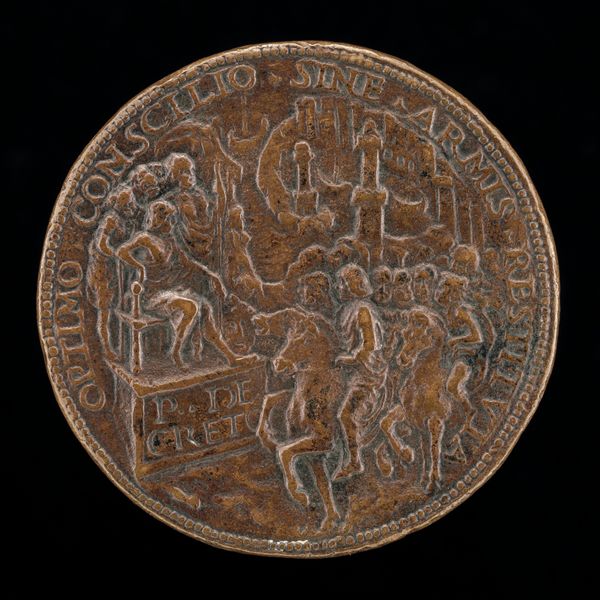![Triumphal Procession of Fame with Abundance and Victory [reverse] by Etienne Delaune](/_next/image?url=https%3A%2F%2Fd2w8kbdekdi1gv.cloudfront.net%2FeyJidWNrZXQiOiAiYXJ0ZXJhLWltYWdlcy1idWNrZXQiLCAia2V5IjogImFydHdvcmtzLzQ3YzVhY2UwLTM1Y2YtNDVhMS1iNzJkLTZkOGVhZTNmMzgyNi80N2M1YWNlMC0zNWNmLTQ1YTEtYjcyZC02ZDhlYWUzZjM4MjZfZnVsbC5qcGciLCAiZWRpdHMiOiB7InJlc2l6ZSI6IHsid2lkdGgiOiAxOTIwLCAiaGVpZ2h0IjogMTkyMCwgImZpdCI6ICJpbnNpZGUifX19&w=3840&q=75)
Triumphal Procession of Fame with Abundance and Victory [reverse] 1552
0:00
0:00
carving, relief, bronze, sculpture
#
portrait
#
medal
#
carving
#
allegory
#
stone
#
sculpture
#
relief
#
bronze
#
11_renaissance
#
geometric
#
sculpture
#
carved
#
history-painting
#
miniature
Dimensions: overall (diameter): 5.3 cm (2 1/16 in.) gross weight: 32.86 gr (0.072 lb.) axis: 6:00
Copyright: National Gallery of Art: CC0 1.0
Editor: This bronze relief, "Triumphal Procession of Fame with Abundance and Victory," was crafted by Etienne Delaune in 1552. It’s quite small, depicting what seems to be a chariot scene. It looks incredibly intricate given its scale. What can you tell me about it? Curator: I see here the product of skilled labor embedded within a specific material and social context. It challenges our notion of high art versus craft. Delaune's work in bronze asks us to consider the economics of bronze production in 16th century France. Where was the ore sourced? Who were the laborers involved in the casting process? How was this object used? Editor: So it’s not just about the artistic vision, but also the whole production process. Why is that important? Curator: By understanding the processes and materials, we connect the piece to broader economic and social realities. For instance, was Delaune’s workshop supported by a wealthy patron, thus linking the artwork to displays of power? What was bronze used for at the time, and how did its purpose influence this piece? Editor: I never thought about it that way. The medal as an economic product with political ties and how it shaped art at that time. Curator: Exactly! By studying the materials, the labor involved, and the socio-economic background, we unpack a whole story. How the material’s significance influences this "Triumphal Procession." Consider it a snapshot into the material conditions of 16th-century society, pressed into bronze. Editor: Thank you. I see the historical value in it. Thinking of art as a historical snapshot of society is fascinating.
Comments
No comments
Be the first to comment and join the conversation on the ultimate creative platform.
